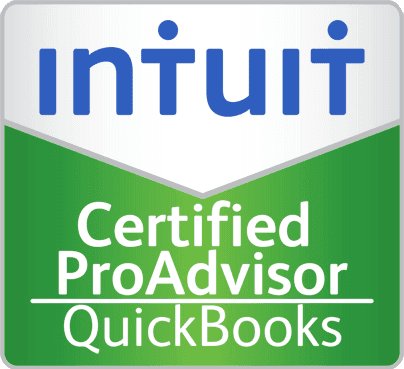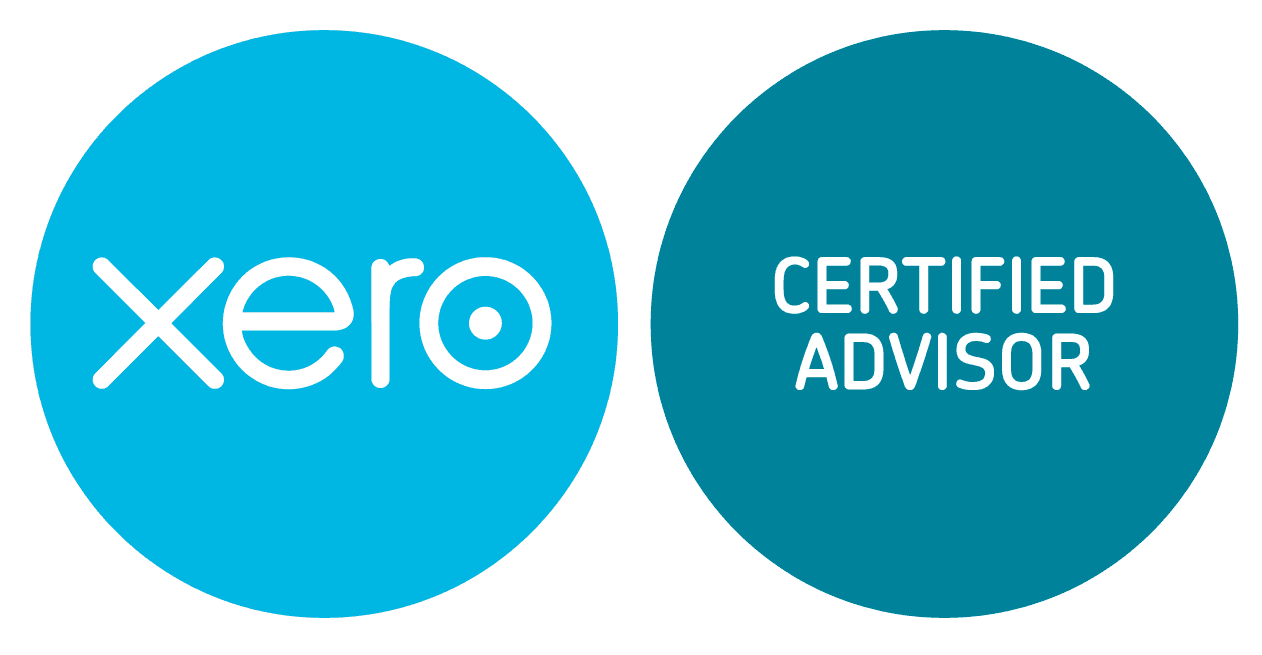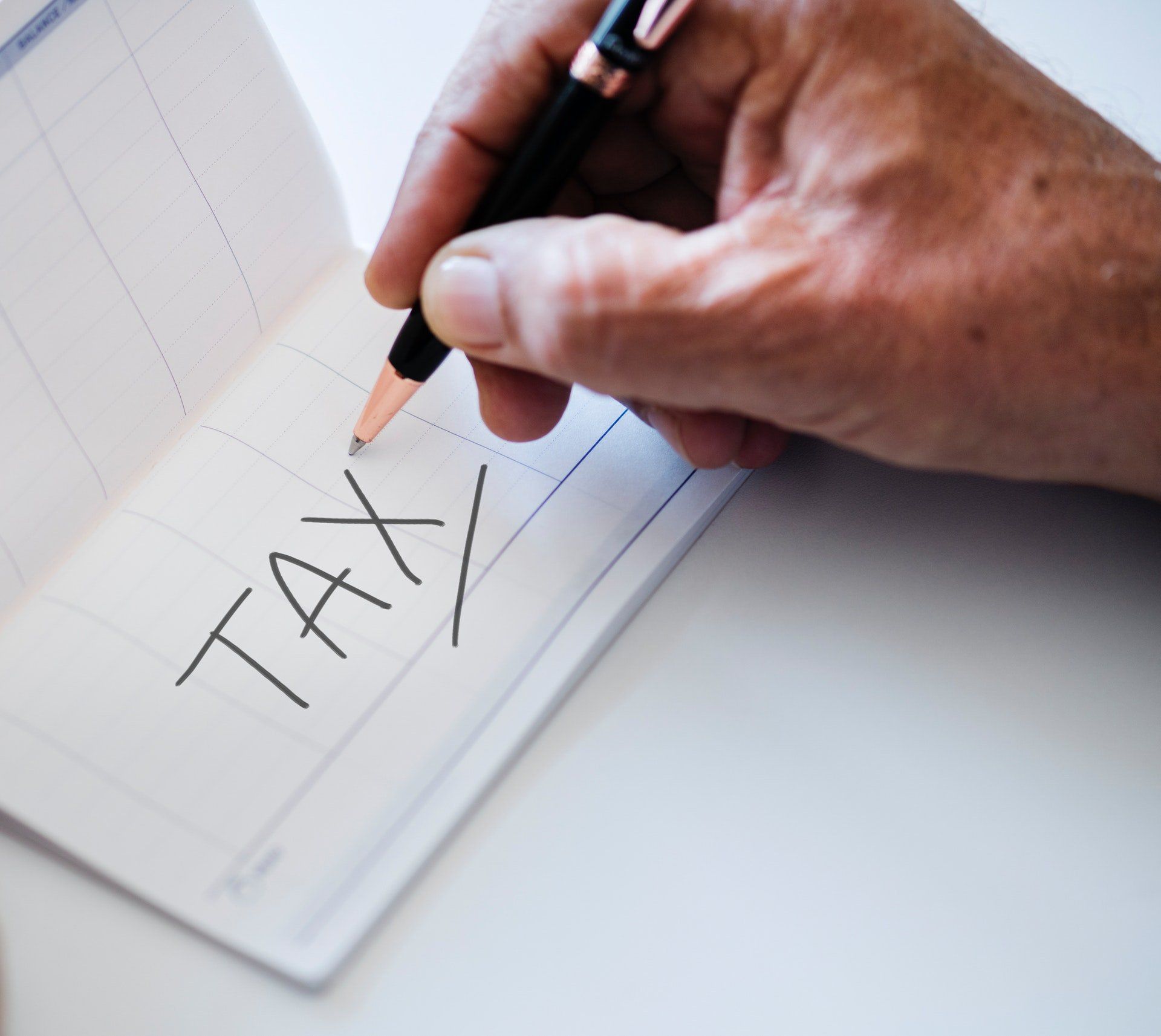The smart choice for your bookkeeping needs
Welcome


Contact us
Our Blog


Firstly, MTD is only compulsory to VAT registered businesses who have a turnover of over £85,000. This is the turnover limit for compulsory VAT registration but if your business has voluntarily registered and your turnover remains below £85,000 per 12 month rolling basis, you will not (yet)
need to be MTD compliant. You can carry on as before and file your VAT Returns through the HMRC portal (gateway) if this is how you have been doing it up to now.
MTD basically means that you need to start keeping digital records and filing your Returns through HMRC approved software. There is a list of HMRC approved software on their website at www.tax.service.gov.uk/making-tax-digital-software
If you currently run an accounting system which is not MTD compliant (for example Microsoft Excel spreadsheets) then you have 2 options –
Move your accounts to a new MTD compatible software product
Although this is the solution that I would personally recommend, I do understand that it can be a cost that you may not want to pay out for. Most approved products range from about £18 per month (plus VAT) and also if you are used to using your current system, you may not want to invest
the time and money in to re-learning a new software.
Link your current accounting system to a bridging product
If the solution to move your accounting to a new software that is MTD compatible is not a preferred option to you, there is the option to keep your existing system and purchase a bridging software. The list for these is again on the link above and charges can range from £15 per VAT Return so can be a much cheaper option. The way that bridging software works is that you will need to convert
your current VAT report in to a CSV file in excel and then import it into the bridging software. The bridging software provider should be able to advise you how to do this as you will not be able to manually enter the figures in yourself.
To be MTD ready, you will also need to sign up to it. You will not automatically be enrolled after 1st April. This is simple and easy enough to do and shouldn’t take you more than 15 minutes (although if you are on my books, I will do this for you so you won’t need to worry). To enrol, you need to go to the website at www.gov.uk/guidance/sign-up-for-making-tax-digital-for-vat and enrol your business for MTD. Then you need to switch your software to the MTD version (instructions will be provided by your software provider) and then you are ready to rock and roll!!
You can find more information about MTD and how it may affect you and your business at www.gov.uk but alternatively, please give us a shout if there is anything that you are unsure of or need help with.

‘Why?’ I hear you ask !!! 😊
The reason is not a very nice one for those who fall into that category but it’s because of the reduced Personal Allowance. Each year every UK taxpayer is given a personal tax free allowance (£11850 for the current 2018/19 year) where they can earn up to this allowance before their income becomes liable to tax deduction. However, if your income falls over £100k then this personal allowance is restricted. The personal tax free allowance is reduced by £1 for every £2 that your income goes over the £100,000. Therefore, if you have income over £123,700 for the year, you will not be eligible to receive any personal tax free allowances at all ☹
The way that HMRC claims back this allowance (as all UK taxpayers are allocated their Personal Allowance automatically through their PAYE tax codes) is by asking those who receive over £100k, to complete a Self Assessment Tax Return so that the adjustment can be made through their Self Assessment calculation and the tax due, can be repaid to HMRC.
So the moral of the story is………don’t earn over £100,000 per year?!?!? 😉

I must apologise that my blogs have been far and few between this year as I have just not been able to find the time to write them on a regular basis…..BUT my New Years resolution is to write them at least once a fortnight (although I have to be honest and don’t have a very good track record for keeping resolutions – if I did, I’d be 8 stone and a millionaire !! 😊)
This year has been an amazing year for me, both from a business and personal point of view. We moved house earlier in the year which has been the best decision we have ever made 😊 It has enabled me to grow the business as the new home has an office downstairs and with both of my children now at the local school (and doing awesomely well I have to add – proud Mummy moment 😉), I have been able to fully focus on Edney Bookkeeping & Accountancy Services which has been great.
At the beginning of 2018 I had 44 clients on my books. As the year comes to a close, the count is now 124! The majority of these new clients have come from recommendations and introductions from current clients and for this, I will be forever grateful to you all.
With the business growing fast, I have had to take on a member of staff and the need for this could not have come at a better time. My twin sister was made redundant from her employer in March and with her redundancy money, she put herself through her AAT (Accountancy) exams and has been able to come on board with me (I’m very proud of what she has accomplished – way to go Emma!!). Not only has this been a great help with the day to day tasks of the business but it has also given me a new love for what I do. It can be very lonely being Self Employed but having her come in to the office a few times a week has been great 😊 and we have had a few giggles at the double takes some of my clients have made during their visit to us for an appointment 😉
Thank you also to my husband Bjorn. Not only is he my husband but he is my businesses Web designer and IT support 😉 and I would be lost without him (I spent a very stressful 2 days in June thinking my keyboard had broken as the number pad wasn’t working…..he ‘fixed’ it by pressing the ‘numlock’ key!! – doh!!)
All in all it has been a wonderful year. I have enjoyed watching all of my clients’ own businesses grow and also being able to sort out some very challenging problem cases, which have been a relief for the owners of that business once resolved (you know who you are!!)
I look forward to 2019 and hope that it brings me as much joy as 2018 did.
Thank you to you all for your continued custom and support and of course your referrals and recommendations to potential new clients.
I wish my family, friends and clients a wonderful New Year and hope that is a prosperous and successful year for you all!

So, as I’m sure that you are all aware by now, the Autumn budget for 2018 was held last week. Obviously in true budget style, the budget announcement is about a million pages long so I have taken the liberty of trawling through the budget and have made some bullet points of the most appropriate changes that I think will affect my customers the most. Here they are …
- Corporation Tax for Limited companies. The current Corporation Tax rate has been reduced from 20% in 2017/18 to 19% in the current year 2018/19. The government announced that this will be further reducing to 17% for 2019/20 in the aim of helping smaller companies to grow.
- The Personal Tax Free Allowances will be increasing from £118500 for the current 2018/19 tax year to £12500 for 2019/20 but does not plan to increase again for the following year 2020/21.
- The higher rate tax band is also set to increase up to £50000 as from April 2019. This is a whole year earlier than originally planned but as with the Personal Allowance, will remain at this threshold for the 2020/21 year also.
- The fuel duty has also been frozen yet again for the 9th year running.
- The Annual Investment Allowance (for company plant & machinery) has increased from £350000 to £1 million to support business investment.
- The Employment Allowance (providing businesses and charities with up to £3000 off their Employers National Insurance bill) will be restricted so that only smaller businesses with an employers national insurance contributions bill of below £100k will qualify.
- Self Employed National Insurance Contributions (NICs) class 2 is set to stay and is not being abolished as was previously predicted. Had the class 2 been abolished, the self employed would have had to move on to Class 3 contributions instead which would have increased the weekly National Insurance Contributions of £2.95 (for 2018/19) to a staggering £14.65 per week! I for one am super grateful that Class 2 is staying 😊
- Individual Savings Accounts (ISA) annual subscription limits are staying at £20,000 per year for 2018/19 and will not be changed for 2019/20.
- VAT registration threshold will remain at £85,000 for the next 2 years and will be reviewed again in April 2022 when the terms of the EU exit are more clear.
In fairness, there is quite a lot more information that came out of the Autumn budget but the above are the points which I think are most relevant to my customers and blog readers.
However, if you would like to see the full budget in all it’s glory, feel free to follow the link below
https://www.gov.uk/government/publications/budget-2018-documents/budget-2018#tax
All in all, I think that there are some good changes announced in this budget which in my humble opinion seem to be trying to help the working class and small businesses 😊

Well we had a busy one this weekend at the annual charity pig race for the ‘Help Jessica Walk’ charity. Myself and Emma were at the Pavilion in Pawlett nice and early on Saturday morning setting up the stalls, erecting gazebos and getting everything organised for this event. The weather was horrific which was a shame as the event is usually held outside but we didn’t let it dampen our spirits and we just moved the whole event inside (except for the BBQ of course!!)
As a local business, we like to sponsor local charities and the ‘Help Jessica Walk’ charity is one that is close to our hearts so it always feels amazing to help out when we can.
I helped to run the totes and had much fun taking the bets and paying out the winnings. I was able to put my maths skills to good use when calculating the pay outs for each win 😊

Well today is 23rd August and all over Facebook today I have been seeing posts about GCSE grades as they were released today. Congratulations to everyone who passed their GCSEs today or had the results that they needed to do what they desire for their future.
This lead me on to thinking about youngsters who go on to further education and therefore I thought that today's Blog should be about Student Loans and Student Finance.
You may be able to borrow money from the government to help pay for university or college tuition fees and to help with your living costs whilst you are a student. You only start repaying student finance/loan once you earn over a certain threshold (which changes each year). The size of your monthly repayments will depend on how much money you earn, not on how much is outstanding on the loan. You will repay your loan either via monthly deductions in your salary taken by your employer (once you start work) or if you are Self Employed, you’ll repay your loan through your Self Assessment Return.
The amount of loan that you can apply for depends on a number of things from the course that you are doing to the amount of income you receive. There is an online calculator on the HMRC website where you can enter all of your individual details and it will tell you what you can apply for and how much you can apply for. Here’s a link direct to the calculator
http://media.slc.co.uk/sfe/1819/sfe_terms_and_conditions_guide_1819_o.pdfThe repayment of your loan will depend on when you started your educational course. The interest rate charged also depends on when you started your course and what course it is as Postgraduate loans are treated differently to loans for undergraduate courses. There is full guidance in the Student Loan Manual which can be found on the following link
http://media.slc.co.uk/sfe/1819/sfe_terms_and_conditions_guide_1819_o.pdf
I am usually more specific in my Blog writing but because there are so many variables to consider when applying for a Student Loan, I think it more appropriate to link you direct to the pages that you need. Otherwise, this blog would end up about 10 pages long!!!
I hope this has at least pointed you in the right direction to discovering what help is out there for students and how you can claim it 😊
It has always been something that you are automatically entitled to when you are responsible for a child or children and I remember sitting down and applying for child benefit when I was pregnant with my first child 😊 The amount of child benefit that you were entitled to receive was only ever dependant on the amount of children that you have. Well not anymore!!!
In the tax year 2012/13, a new rule came in to place called the High Income Child Benefit Tax Charge and unfortunately not that many people appear to be aware of it and are getting lumped with hefty tax bills. This is because if either yourself or your partner (if you have one) receive an income of £50,000 or more per year, you will be subject to the High Income Child Benefit Tax Charge.
This charge is all dependant on how much over that £50,000 your income is and the charge is subject to change in line with budgets etc BUT the main rule to go by is that for every £1,000 earnt over that £50,000 threshold, you are taxed on your child benefit a sum of 10%.
To give you an example, if you claimed child benefit for 1 child between 2013/14 and you were paid £50,000 you would have received the full child benefit of £1055.60 for that year. If you earnt £51,000 for that year, you would have received the full child benefit of £1055.60 but would be charged a child benefit tax of 10% totalling £105.00. If you earnt £52,000 your child benefit tax would have been 20%, £53,000 would be 30%, £54,000 would be 40% and so on. Once your income received gets to £60,000 then you would not be entitled to receive any Child Benefit as the tax charge would be 100%.
The main stinger in this charge is that it is not the household income that is taken into consideration. Therefore you could have a family with 2 adults where one earns £51,000 and one is unemployed (total household income of £51,000) and the High Income Child Benefit Tax Charge applies. You could also have a family with 2 adults where they each earn £49,999 (total household income of £99998) and the High Income Child Benefit Tax Charge would not be applicable because neither individual earns over the £50k threshold. Crazy isn’t it!!!
The way that HMRC will collect the tax charge is that they require anyone who earns over £50,000 to now complete a Self Assessment Tax Return where you will declare your income and be charged the Tax Charge accordingly.
I am coming across more and more customers who have been caught out by this Tax Charge and when they have raised their dispute with HMRC, the standard response is that it is individual’s responsibilities to ensure that they are aware of these regulations ☹
Therefore, I thought it was worth writing this weeks blog about it as although it’s not good news for some, it’s worth knowing about and being aware of 😊
VAT is the next tax to be going digital meaning that from 1 st April 2019, if you have a VAT registered business, you MUST keep your accounts in a digital format. Manual accounts are no longer in line with regulation. There are a number of software companies that provide a software package allowing you to keep your records digitally and also to file your quarterly Returns digitally. A list of these software packages can be found on the HMRC website but some familiar ones that you may have heard of are Quickbooks, Xero and Kashflow.
The cost of these software packages varies between software supplier to software supplier. As an accountant, I use a number of different packages depending on which software package plan suits each customer best. As a business you can subscribe to the software yourself and pay monthly or as an accountant, I can subscribe and pass the costings back to you through my invoices.
The pros of VAT being made digital is that if a software package is used, there is less chance for mistakes to occur as each VAT Return will produce an audit report enabling you to check the entries made. Also as the software packages are linked to the Cloud, all data entered is backed up and is therefore retrievable easily and instantly. Any Returns submitted are received by HMRC usually within hours and a submission receipt will be provided.
The downside though is the additional cost to the business. However, most software packages can be subscribed to on a monthly basis spreading the cost and usually range from between £9 per month to £22 per month (depending on which package is required).
For those of my customers who are VAT registered but are not yet digital, I will contact you over the next couple of months to discuss your options and advise where I can. For those of my customers who already have digital accounting records, you need not do anything.
As always, I’m just a phone call or email away so if you’d like any more information or have any questions regarding this, please get in touch 😊

When people are considering setting up a business, it’s a tough decision about whether to become a sole trader or a Ltd company. The decision can only be made by the person concerned and there are pros and cons to both, but a lot of people ask me about how they will take a drawing if they set up a Ltd company and become a director.
When a Ltd company is set up, the director/s become an employee of that company and therefore don’t declare or pay their tax in the same way as a sole trader. As an employee, they are entitled to draw a salary (and become liable to the rules for PAYE) or if they have shares in that company, they can also take a dividend from the profit that the company makes during that financial year.
A dividend is a distribution of that companies profits and is decided by the board of directors as to how much of the profit made by that company for the year is kept as retained profit (and possibly re-invested into the company) and how much can be paid to its shareholders through a dividend pay-out. Dividends are usually paid out as a cash payment but can be issued as shares of stock or other assets such as property.
The shareholder who receives that dividend will need to declare it on a Self Assessment Tax Return. A few years ago, dividends had tax deducted from them at source (by the company paying them) before they were paid to the shareholder but this was abolished a number of years ago and are now paid gross. For 2018/19 a shareholder is entitled to receive £2000 of dividends without paying tax on that income (although this limit was higher for 2017/18 at £5000). After that tax free amount, dividend tax is calculated depending on which income tax band you are in (see my blog of 25 th March 2018 for the tax band rates). The 2018/19 dividend tax charges are as follows –
- Basic Rate - 7.5%
- Higher Rate - 32.5%
- Additional Rate - 38.1%
As with all of the tax rates, these amounts and percentages are subject to change each year.
And that’s it in a nutshell so to speak 😊
Thanks for reading this blog and I promise not to leave it soooooo long next time!!
